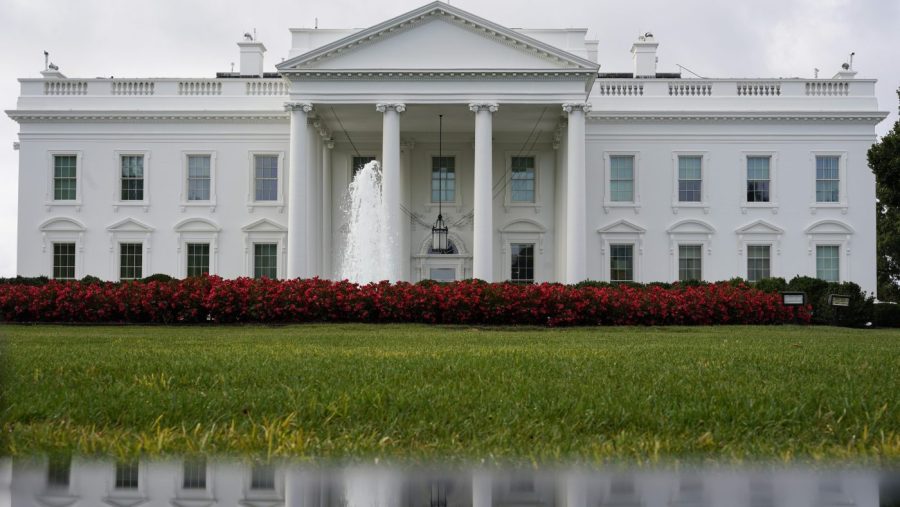Don’t blame Trump — civil service politicization has been going on for decades

Earlier this year President Trump dealt another blow to the civil service with an executive order establishing a new “Schedule G” classification expanding the number of political appointments in federal agencies.
The Trump administration argues that these non-career, policy-making appointees will ensure the faithful execution of its agenda. Critics — still reeling from the mass layoffs orchestrated by the Department of Government Efficiency — view it as the latest in the administration’s efforts to erode the merit-based civil service and recast it as an instrument of presidential will.
Critics are right to be alarmed that the replacement of nonpartisan experts with political loyalists threatens democratic government, but they’re wrong to think it’s a problem that starts and ends with Trump. Widespread characterizations of Schedule G as unprecedented fail to recognize that it represents the culmination of a decades-long bipartisan effort to chip away at the norms that once insulated civil servants from political influence.
The ideal of a merit-based, impartial federal service emerged at the end of the 19th century, when the increasing size and complexity of government demanded new models of administration. From the Civil War onward, reformers, frustrated by the low skill level and high turnover rates of federal employees under the spoils system, called for the creation of a professional, career civil service to carry out the expanding duties of the federal state.
In 1883, they ended patronage with the Pendleton Act, which instituted the merit system and created a Civil Service Commission to craft exams for aspiring civil servants. In the decades that followed, administration was understood as a non-partisan science. By the 1930s, the majority of the federal workforce was classified under the merit system.
But almost as soon as depoliticized administration was put into place, Americans questioned it.
During World War II, expanded wartime agencies drew the ire of citizens frustrated with price controls and rationing. And the example of the Nazi state, which many understood as the result of the “just following orders” logic of bureaucracy, made many Americans wary of neutral administration that could be put in the service of any political goal.
In the decades that followed, calls to return to partisan administration were widespread. Reformers worked to roll back the merit system, which they felt limited discretion to a fault, dehumanizing administrators and making them ineffectual executors of government policy.
In 1949, a reorganization effort under President Harry Truman alleged that the Civil Service Commission was “slow, impersonal and cumbersome” and critiqued its use of rigid employment rules meant to ensure neutrality. In 1953, President Eisenhower created a new designation, Schedule C, to exempt some civil servants from the merit system, thus allowing for more policy-making positions within the federal bureaucracy.
In the 1960s, civil rights-minded actors further criticized neutral administration, alleging that it stifled citizen participation and failed to adequately respond to the concerns of marginalized groups. By the 1970s, the separation of politics and administration was no longer the prevailing paradigm. Experts in public administration declared the advent of a “New Public Administration” which eschewed neutrality in favor of normativity and responsiveness to political demands.
In the years that followed, actors from across the political spectrum offered proposals to politicize government. When President Jimmy Carter’s 1978 Civil Service Reform Act abolished the Civil Service Commission and replaced it with the Office of Personnel Management (now a key vehicle for Trump’s reforms), The Washington Post noted its new emphasis on partisan administration, observing that “the Carter administration is arguing that the pendulum has long since swung too far in a protective reaction against the spoils system, abandoning the responsiveness and accountability of political control.”
Under President Ronald Reagan, Donald Devine, who has now taken an advisory role in the Trump administration, served as the head of the Office of Personnel Management, where he introduced personnel systems meant to emphasize political leadership in the agencies. President Bill Clinton’s subsequent efforts to “reinvent government” similarly stressed responsiveness, decentralizing administration in order to “empower employees to get results.” It also eliminated career positions by offering a “buyout program” to encourage federal employees to leave government.
In the Trump administration’s efforts to politicize and undermine the civil service, we see these developments taken to an extreme. Yet although the pace of this reform effort is exceptional, the logic it represents is not. For more than 75 years, American government has been shifting away from administrative neutrality. In the broader history of administrative thought, Schedule G is not a rupture — it is the logical conclusion of the decades-long erosion of administrative neutrality.
Those who seek to rehabilitate the merit-based administrative governance will need to not only counter Trump, but also the ideological shift his administration represents, which dates back much further.
Casey Eilbert is a postdoctoral research fellow at the Center for Economy and Society at the SNF Agora Institute at Johns Hopkins University.